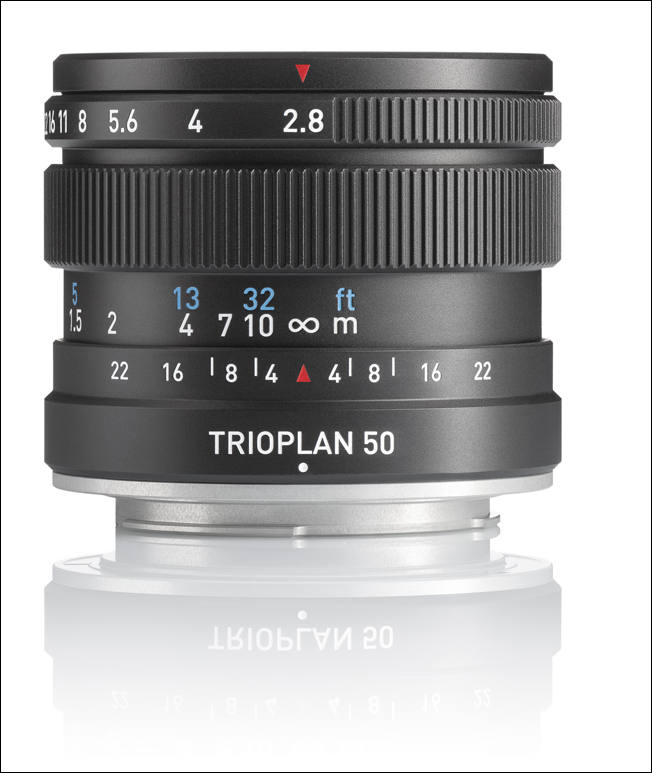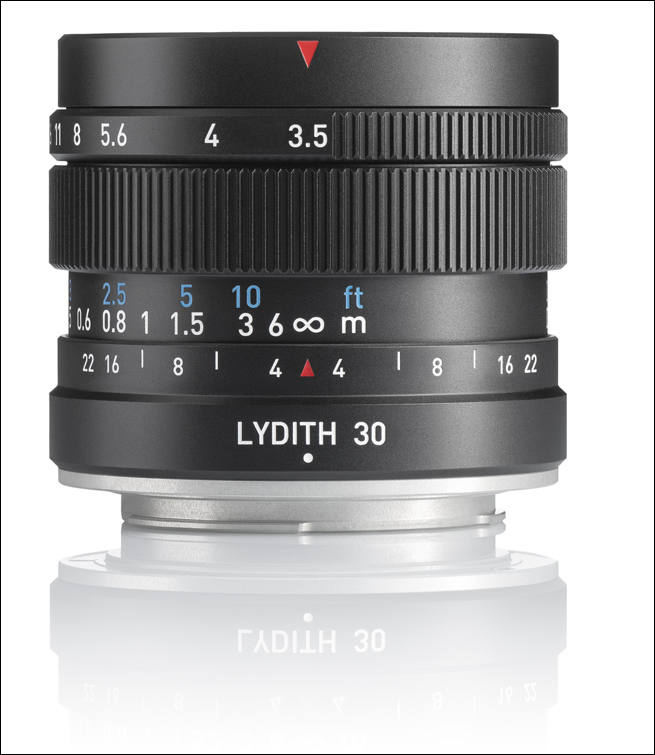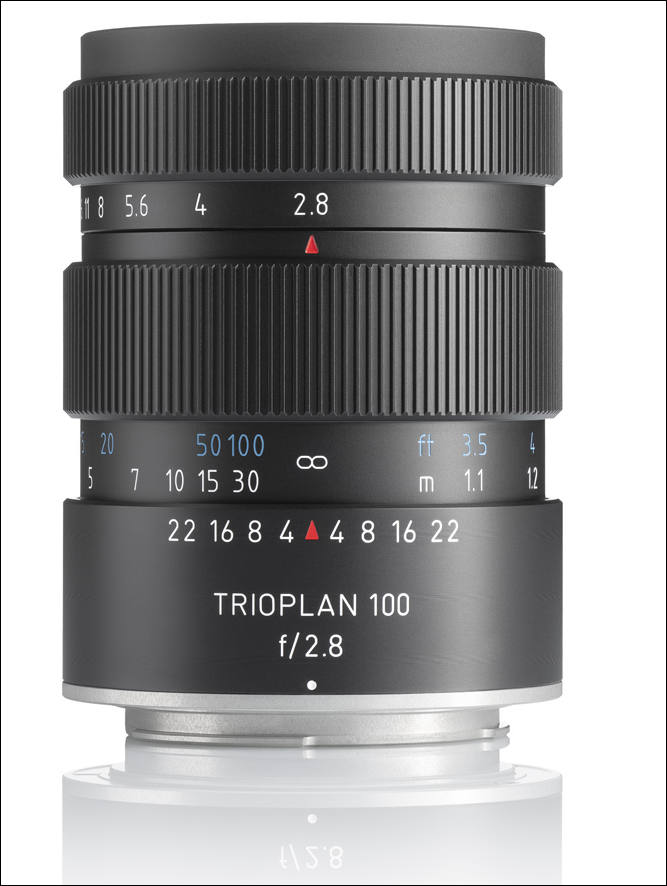
It allows to keep PV going, with more focus towards AI, but keeping be one of the few truly independent places.
-
PR
Renewal of the Meyer Optik Görlitz portfolio on schedule
- Optimization of the first lens completed
- Further new versions of previous lenses in progress
- First completely new development finalized / more to follow
- Cooperation with Fotomuseum Görlitz & the City of Görlitz
Meyer Optik is pushing the revision and optimization of its existing portfolio and has already completed its first projects. The developments are thus on schedule and the first Meyer Optik lenses developed and produced by OPC will be available in late summer 2019.
"We have analyzed the entire existing portfolio, identified optimization potential and categorized it according to effort. This approach now enables us to efficiently optimize lens by lens and to publish in a timely manner," explains Timo Heinze, Managing Director of OPC Optics. "We are currently in the prototype phase of the first optimized lens and are confident that we will achieve an increase in the mechanical quality and imaging performance of this and all other lenses. Depending on the individual lens, the scope of these improvements and changes will of course vary. The unique image language of every individual lens will be retained of course."
Optimization of the first new version finalized
During the analysis process it turned out that the first new edition will be the Trioplan 100. This new Trioplan 100 II is currently in the prototype phase and will be the first revised lens to be released.
"The previous Trioplan 100 is a good lens and its success proves it right. We have received an unbelievable number of enquiries about the availability of the Trioplan 100 and see many posts in the social media from satisfied photographers who proudly present their Trioplan pictures. Our technical analysis also showed that the previous Trioplan 100 is simply a good lens, and yet we were able to introduce and implement improvements here and there. This applies on the one hand to the mechanics and on the other hand to the optics itself in terms of contrast behavior and resolution. We are confident that our current prototype tests will confirm this and that we will be able to start serial production immediately after completion of the test series," explains Heinze.
Further improved, new editions in progress
Also, under development are the Trioplan 50 / 35+, Lydith 30 and Primoplan 58 / 75, which will receive a complete redesign of the mechanics and outer geometry. In addition, the optical calculations and the glass itself will of course also be put to the test and examined for optimization potential.
Of these lenses, the Trioplan 50 will now be completed next, followed by the Lydith 30 and the Primoplan 75. The optimization work will then be completed with the Primoplan 58 and the Trioplan 35+.
With the Trioplan 50, the mechanics and outer geometry as well as the optical calculation were completely revised so that a better haptic and a considerably improved imaging performance are to be achieved. These theoretical optimizations must now be verified in real use. The necessary prototypes are currently in production and will then be extensively tested.
The selling prices of the new versions are not yet fixed. However, we are working hard to optimize production and internal processes so that the new lenses can be offered at realistic and attractive prices without compromising quality and precision.
First completely new development finalized / more to follow\
As already announced, Meyer Optik will also launch completely new lenses on the market. Under the venerable name "Primagon", a completely new lens will probably be launched this year. The elaborately constructed design consists of 8 lenses in 6 assemblies and will appear as Primagon 50 f2.0. Further details such as an exact publication date, prices, available mounts, technical details, etc. will be published in due course.
Cooperation with Fotomuseum Görlitz and the city of Görlitz
Meyer Optik will work closely with the Fotomuseum Görlitz and the city of Görlitz in the future. Among other things, the 5th Photo Festival in Görlitz (30.08. - 22.09.2019), which is organized by Fotomuseum Görlitz e.V., will be supported by Meyer Optik. As a part of this event, employees of Meyer Optik / OPC Optics will be on site during the opening weekend and will be happy to talk to anyone interested.
About Meyer Optik Görlitz
Meyer Optik Görlitz has a long history as a German manufacturer of high-quality lenses. Founded in 1896, Meyer Optik Görlitz has been in almost continuous existence for around 120 years. Thanks to the creativity which makes the Meyer Optik Görlitz lenses possible, the brand enjoys huge popularity worldwide -- today as much as always.
About OPC Optics
OPC Optics was founded as a company in 2016 and is based in Bad Kreuznach. In addition to providing technical advice for projects and contract measuring of optical components, OPC Optics is primarily known as a specialist in high-precision aspheric and spherical lenses, as well as double aspheric lenses, achromatic lenses and assembly units. Its customers include companies involved in photography, medical technology, automotive and laser technology. With state-of-the-art machines, OPC Optics focuses on providing the highest possible quality and precision in the manufacture of glass lenses. As a result of comprehensive documentation of the entire process, from molten glass to raw glass processing, right through to the finished lens, OPC Optics is trusted by customers all around the world.
-
New lenses




 sa11133.jpg652 x 773 - 54K
sa11133.jpg652 x 773 - 54K
 sa11134.jpg655 x 755 - 53K
sa11134.jpg655 x 755 - 53K
 sa11135.jpg667 x 886 - 64K
sa11135.jpg667 x 886 - 64K -
On 100mm lens
All the parts inside and outside the lens have been produced completely new, but some retain the same design as those used in the Mk I version. As we have changed the shape of the main elements in the design and changed the distance of the elements from the aperture, we also needed to redesign the mounts that hold the elements in place [and change] the way the aperture unit works, as in the Mk l version it had no hard stops when it closed or opened completely. That caused damage to the aperture, as the blades could get bent when the aperture ring was turned to its full extent. Our Mk II the aperture has hard stops, so you can turn the aperture ring and really hit against the end without damaging anything. Overall we changed many small things to produce a lens of much higher quality and to make the focusing smoother, but most important are the changes to the lens elements and those main mechanical parts that increase durability.
Howdy, Stranger!
It looks like you're new here. If you want to get involved, click one of these buttons!
Categories
- Topics List23,990
- Blog5,725
- General and News1,353
- Hacks and Patches1,153
- ↳ Top Settings33
- ↳ Beginners256
- ↳ Archives402
- ↳ Hacks News and Development56
- Cameras2,366
- ↳ Panasonic995
- ↳ Canon118
- ↳ Sony156
- ↳ Nikon96
- ↳ Pentax and Samsung70
- ↳ Olympus and Fujifilm100
- ↳ Compacts and Camcorders300
- ↳ Smartphones for video97
- ↳ Pro Video Cameras191
- ↳ BlackMagic and other raw cameras116
- Skill1,960
- ↳ Business and distribution66
- ↳ Preparation, scripts and legal38
- ↳ Art149
- ↳ Import, Convert, Exporting291
- ↳ Editors191
- ↳ Effects and stunts115
- ↳ Color grading197
- ↳ Sound and Music280
- ↳ Lighting96
- ↳ Software and storage tips266
- Gear5,420
- ↳ Filters, Adapters, Matte boxes344
- ↳ Lenses1,582
- ↳ Follow focus and gears93
- ↳ Sound499
- ↳ Lighting gear314
- ↳ Camera movement230
- ↳ Gimbals and copters302
- ↳ Rigs and related stuff273
- ↳ Power solutions83
- ↳ Monitors and viewfinders340
- ↳ Tripods and fluid heads139
- ↳ Storage286
- ↳ Computers and studio gear560
- ↳ VR and 3D248
- Showcase1,859
- Marketplace2,834
- Offtopic1,320






